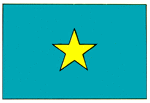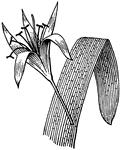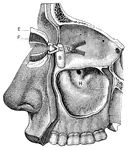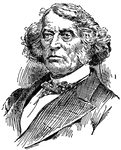
Charles Sumner
Charles Sumner (January 6, 1811 – March 11, 1874) was an American politician and senator from Massachusetts.…

Reed Bunting
Buntings build their nests on the ground, or on low bushes, and in this deposit four or five eggs, (Figuier,…

Cirl Bunting
Buntings build their nests on the ground, or on low bushes, and in this deposit four or five eggs, (Figuier,…
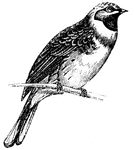
Cirl Bunting
Buntings build their nests on the ground, or on low bushes, and in this deposit four or five eggs, (Figuier,…

Sheng
One of the most important musical instruments in use among the Chinese, one that is indispensable to…

Knots
Simple knot. Note: the loop of a knot is called the "bright." The "standing part" of the rope is the…

Knots
Figure eight knot. Note: the loop of a knot is called the "bright." The "standing part" of the rope…

Knots
Common sheet bend connects two ropes. Note: the loop of a knot is called the "bright." The "standing…

Knots
Common bowline. Note: the loop of a knot is called the "bright." The "standing part" of the rope is…

Knots
Reef knot or square knot. Note: the loop of a knot is called the "bright." The "standing part" of the…

Knots
Carrick bend joins two ropes. Note: the loop of a knot is called the bright. The standing part of the…

Knots
Flemish loop. Note: the loop of a knot is called the "bright." The "standing part" of the rope is the…

Knots
Chain knot and toggle. The toggle is pulled to tighten up all the loops. Note: the loop of a knot is…

Knots
Sheepshank. Note: the loop of a knot is called the "bright." The "standing part" of the rope is the…
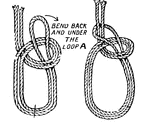
Knots
Bowline on a bight show in two stages. Note: the loop of a knot is called the "bright." The "standing…
Vorticella
Vorticella is a protozoan. Except for when young, it is usually found attached to dead leaves or sticks…
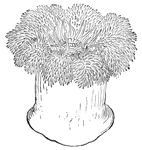
Anemone
The tentacles of the sea anemone are numerous and are borne on a disk surrounding the mouth at the free…
Rotifer
Rotifers are free-swimming pseudo-coelomates. They occur in freshwater and are easily examined because…

Centrifugal Machine
A machine that spins test tubes full of liquid. Uses centripetal forces to seperate the liquid.
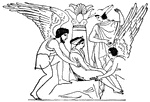
Athenian Lecythus
Greek Vases made especially to deposit in tombs, and are ornamented with polychrome figures on a white…
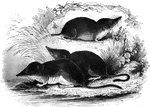
Shrews
"Is about the size of a rat.. Their legs are of equal length, and terminate into five toes, which are…

Zouaves
"Encampment of Colonel Ellsworth's New York Fire Zuoaves, on the heights opposite the Navy Yard, Washington,…
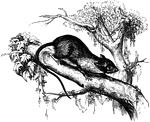
Free Mouse
Dendromys Typicus. "Size of the common mice, and are of a pearly-gray color, and have a black band running…
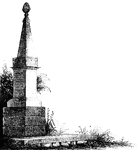
Goshen Monument
"Monument at Goshen. During the battle, Major Wood, of Goshen, made a masonic sign, by accident, which…

Surinam toad
"At the breeding season the back of the female exhbits a number of small pits; into these pits the male…
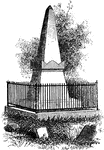
Van Wart's Monument
"Van Wart's monument. The following are the inscriptions upon this monument: North Side: 'Here repose…

Bastile
"The taking of the Bastile, July 14, 1789. The Parisian mob, not satisfied with the formation of the…

Perch
"An embiotocoid fish, with small scales, uniserial and jaw teeth, and lip free and deeply cut along…
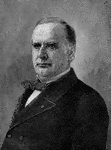
William McKinley
"In the general election of 1896, the principal question at issue was the financial policy of the country.…

Chrysalis of the Luna Moth
"Among the larger and more splendid moths of our own country is the Luna Moth, or Green Emperor Moth,…
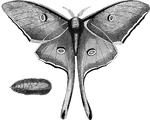
Luna Moth
"Among the larger and more splendid moths of our own country is the Luna Moth, or Green Emperor Moth,…

Caterpillar of the Luna Moth
"Among the larger and more splendid moths of our own country is the Luna Moth, or Green Emperor Moth,…
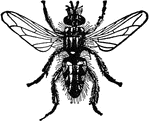
Blow Fly
"Blow Fly is the name popularly given to such two winged flies as deposit eggs in the flesh of animals,…
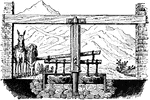
Arrastre
"Mexican Arrastre. A rude apparatus used in Mexico, and to some extent in the United States, for grinding…

Dugong
"The Dugong is an herbivorous mammal, belonging to the Manatees. It ranges from 10 to 20 feet in length.…

Trichina Spiralis
"Trichina Spiralis is the name given to a peculiar nematoid worm which inhabits the muscles, usually…

Trichina Spiralis
"Trichina Spiralis is the name given to a peculiar nematoid worm which inhabits the muscles, usually…
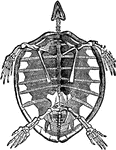
Skeleton of Turtle
"Turtle is, in zoology, the popular name for any species of the Cheloniidæ. They may be distinguished…

Surface of a nail
"Concave or Adherent Surface of the Nail. A, border of the root; B, whitish portion…
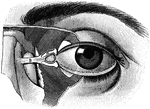
Eyeball
"The Relative Position of the Lachrymal Apparatus, the Eyeball, and the Eyelids. A, lachrymal canals,…
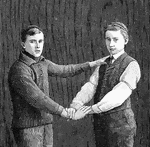
Hand seat
"Improvised Hand Seats: the Three-Handed Seat. THe usefull three-handed seat is made by one bearer grasping…

Seventeen Year Locust
The Seventeen Year Locust (Cicada septendecim) spends seventeen years underground feeding on the roots…
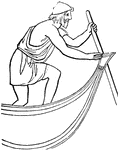
Exomis
"A dress which had only a sleeve for the left arm, leaving the right with the shoulder ad a part of…
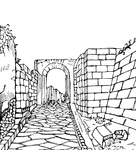
Pompeii
"The following cut gives a view of of a portion of the paved street at the entrance of Pompeii. The…
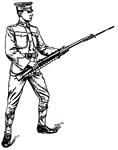
Bayonet Guard
"At the second command sake the position of guard; at the same time throw the rifle smartly to the front,…
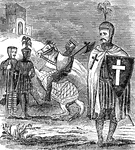
Chivalry and knight-errantry
"The chivalry of the gothic nations began in the woods of Germany. No youth was then permitted to assume…
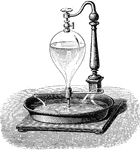
Tourniquet
Hydraulic tourniquet, also called Barker's mill. It consists of a vessel of water free to rotate about…
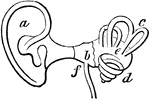
Ear
Interior of the ear. There is external to the head a wide-mouthed tube, or ear-trumpet (a), for catching…
Scorpion or Spider
Chinese, viciousness, poison. In India it is believed that if a scorpion creeps over the body it causes…
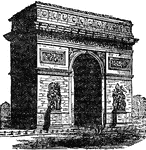
Arch of Triumph
A structure in the shape of a monumental archway, usually built to celebrate a victory in war. The arch…
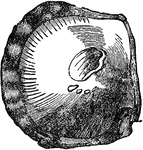
Pearl
A calcareous secretion formed chiefly of calcium carbonate, and found as a morbid deposit around a central…
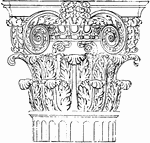
Composite capital
"The Composite or Roman order was the outcome of the attempt to improve the Corinthian, of which it…
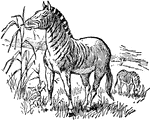
Quagga
The quagga is an extinct subspecies of the plains zebra, which was once found in great numbers in south…
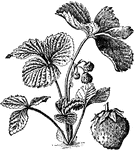
Strawberry
A genus of plants extensively cultivated for their luscious fruit. They were so named from the practice…

